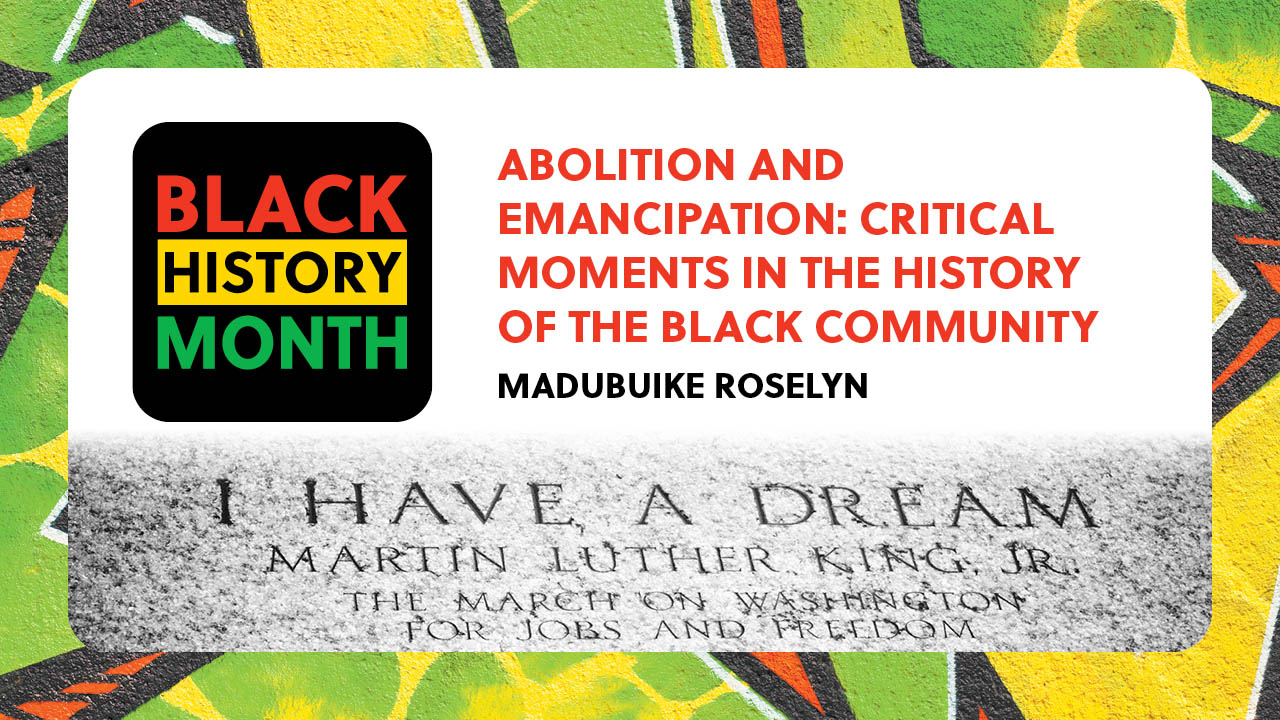Abolition and emancipation: critical moments in the history of the Black community
 CREDIT: AGS1973
CREDIT: AGS1973INTRODUCTION
Abolition and emancipation represent cornerstone chapters in the intricate tapestry of Black history, signifying crucial moments that moulded the trajectory of freedom and equality. Rooted in the fight against slavery, these movements reflect the resilience, courage, and determination of African Americans in their pursuit of freedom.
THE ABOLITION MOVEMENT
During the 18th and 19th centuries, the Abolition Movement emerged, representing a united endeavour to put an end to the practice of slavery. Activists like Frederick Douglass, Harriet Tubman, and Sojourner Truth became influential advocates, pushing for the immediate end of slavery. Their passionate speeches and writings sparked a fervent movement that resonated nationwide, questioning the ethical underpinnings of a society funded on the exploitation of individuals. The Abolitionist Movement marked significant moments such as the founding of the American Anti- Slavery Society in 1833 and the release of Harriet Beacher Stowe’s pivotal novel, Uncle Tom’s Cabin, in 1852. These occurrences heightened the opposition to slavery, cultivating an increasing recognition of the inherent humanity within the institution.
EMANCIPATION DECLARATION
President Abraham Lincoln’s issuance of the Emancipation Proclamation on January 1, 1863, marked a crucial moment in the battle against slavery amid the American Civil War. While the proclamation didn’t grant immediate freedom to all enslaved individuals, it proclaimed perpetual freedom of all slaves in confederate-held territories. The executive order fundamentally changed the war’s nature, aligning it within the noble cause of abolishing slavery. Emancipation didn’t immediately ensure freedom; pursuit of equality persisted after the Civil War. Despite this, the Emancipation Proclamation set the stage for redefining the status of African Americans in the United States through subsequent legal and societal changes.
RECONSTRUCTION ERA AND THE 13TH AMENDMENT
The Reconstruction era post-Civil War was a pivotal phase in the quest for Black freedom. In 1865, the 13th Amendment decisively abolished slavery, laying the constitutional groundwork for emancipation. However, the Southern states’ Jim Crow Laws hindered the pursuit of equality, perpetuating racial segregation and disenfranchisement.
LEGAL AND CONTINUED STRUGGLE
Abolition and emancipation efforts paved the way for the ongoing pursuit of civil rights in the United States. The courage and resilience of anti-slavery activists inspire continued activism. The enduring quest for justice and equality is highlighted by the lasting impact of abolition and emancipation, requiring constant vigilance, empathy, and a steadfast commitment to dismantling systematic oppression.
CONCLUSION
Abolition and emancipation mark key moments in Black history, embodying individuals’ tireless efforts to break the chains of slavery and oppression. These movements set the stage for subsequent struggles for civil rights, serving as a testament to the unbeatable spirit of those who championed freedom. As we reflect on these historical milestones, it is important to recognize the progress made and acknowledge the ongoing work required to judge a society that truly embraces equality and justice.















